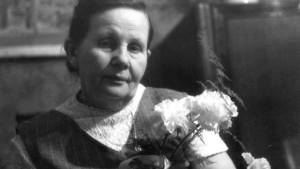Catholic art has served many functions throughout history, from faith education to spiritual inspiration.
The most famous and prized works of art, however, pale in comparison to a simple carving on the wall of a Nazi prison camp. Although there is no color and little definition, the piece was carved in the artist’s most desperate moment. The work expresses hope and a trust in Christ that flies in the face of the terror and despair concentration camps were built to instill.
In the infamous WWII prison camp, Auschwitz, there is no shortage of inspirational tales of Catholic perseverance in the face of persecution. It was there that St. Maximilian Kolbe sacrificed himself to save a Jewish man, who survived captivity and went on to attend Kolbe’s beatification. St. Maximilian Kolbe’s example is one that has inspired and will inspire devotion for generations.
The carvings
Around the corner from the cell where St. Maximilian Kolbe met his fate, another example of the endurance of the Catholic faith persists. There, in prison cell 21, are two carvings: The Most Sacred Heart of Jesus, and the Crucifixion.
Sr. Kathy DeVico, Abbess of Redwoods Monastery identifies the artist as Stephan Jasienski, 2nd Lt. of the Polish Armed Forces. Jasienski, a prisoner of war, carved these images using his own fingernails. He died at Auschwitz in 1944, but his proclamation of faith remains on the wall to this day.
Of the artist, Abbess DeVico wrote:
What prevented Stephan’s heart from becoming hardened with bitterness? What prevented him from ‘hating’ his enemies? Clearly, his prayer, his goal, as he sat in his prison cell sketching this image with his fingernail, was to have his heart become like Christ’s heart. ‘Jesus’ heart images our truest heart’ … perhaps Stephan found his heart through Christ’s heart.

